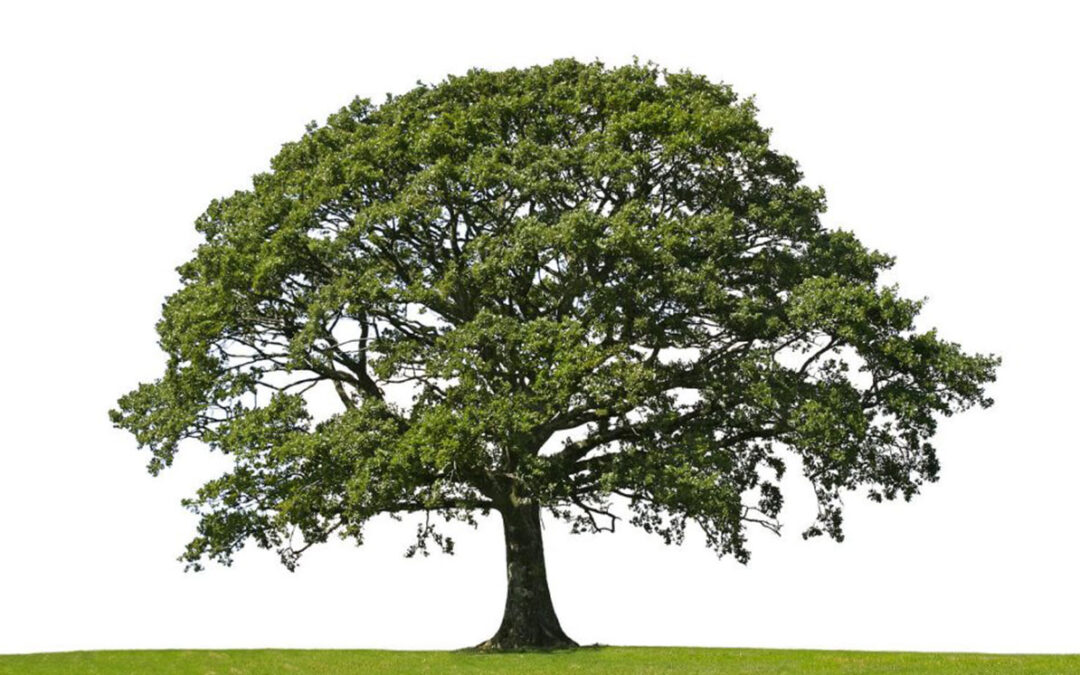In the fall and winter, trees drop their leaves and become dormant as they prepare for colder temperatures. Newly planted trees benefit tremendously from winter young tree care. Believe it or not newly planted trees experience the greatest growth in their root system during this time. According to the Denver Post, trees recently planted are particularly vulnerable because of Denver’s dry winters because lack of moisture can dry out and kill these roots. Not watering throughout the winter is the largest contributing factor to the mortality of newly planted trees.
The following fall and winter watering tips should be used for three years after planting a tree. It takes trees about three years to develop their root systems.
Cool Month Watering Routine
- Fall – Homeowners should tart watering saplings in September and October before the first hard freeze. Slowly trickle water under a tree’s drip line for several hours. Check the ground every two weeks. If the ground is rock hard and dry it is time to water.
- Winter – It is not unusual in Denver to get a warm day in the dead of winter. Take advantage when temperatures are in the 40s to water newly planted trees by allowing the water to soak in before the water freezes at night.
Additional Tips
- Wrap the Trunk – Denver winters with their warm days trigger bark cell growth and movement of nutrients in a tree’s cambium. When temperatures suddenly drop, this new growth freezes causing sun scald and frost cracks. Sunscald is also called Southwest injury because the damage is usually on the southwest side of trees. In Denver, the trunks of young trees, especially thin-barked trees like Honeylocust, Maple, and Linden, need to be wrapped to prevent these conditions. Apply commercial-grade tree wrapping tape in late fall before the first hard freeze. Homeowners be sure to take the wrap off in the spring usually around Easter.
- Mulch the Base – Mulching around trees reduces soil evaporation, improves water absorption, and diminishes
soil temperature fluctuations. Apply two to four inches around the base of each tree but do not allow the mulch to touch the trunk. Allowing the mulch to touch the tree over time can cause rot and stem girdling roots harming the tree.
- Fertilization – Young trees benefit from fall fertilization to winter root system growth. Tree root systems use the nutrients to grow and store food for the next growing season supporting more robust leaf and flower bud growth. Ross Tree recommends using fertilizers low in Nitrogen for fall feeding.
Pruning Young Trees in the Winter
Structural pruning works best on young trees because their branch structure is not fully developed and easily trained. Yard trees are fundamentally different from forest trees because, in a forest setting, trees compete with their neighbors for light. Forest trees form slender tall trunks with fewer and smaller lateral branches in their lower canopy. On the other hand, yard trees with abundant light grow wide with multiple competing leaders and many lateral branches. Gangly trees are more susceptible to mechanical breakage from wind and snow storms. Heavy, thick, crowns keep light out and moist in making them vulnerable to disease and fungi. The main goal of structural pruning is to form a single dominant leader with later branches strongly attached to parent branches.
It is a common misconception that late fall and winter pruning is not good for trees. The reality is that trees set their flower and leave buds in late summer making winter a great time for pruning. Trees generally have plenty of stored energy from the previous growing season to heal wounds properly. After the leaves drop, it is easier to evaluate the tree’s branch structure and make better pruning decisions. Minor pruning on branches less than two inches in diameter can be done anytime.
Rules of Thumb
- Pruning Dose – It takes about three years for the root system of newly planted saplings to get established. During those three years, pruning should be limited to dead and broken branches and correcting major structural defects. The American National Standards Institute (ANSI) standards state that 25% of a healthy tree’s foliage is the maximum that can be removed each year. Property owners should remove as little foliage as possible while still meeting their pruning objectives. Trees under persistent drought stress should not be pruned.
- Pruning Cut Size – Pruning cuts two inches or less in diameter heal faster. Pruning cuts larger than four inches should be made when there is no choice because large cuts take longer to heal and sometimes lead to decay.
- Crown Density – A healthy tree has a least 60 percent of its height as a canopy with 40 percent as the trunk.
Strategies for Structural Pruning of Young Shade Trees
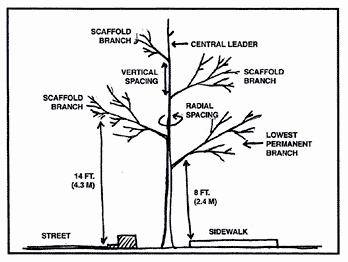
Start by removing dead, damaged, crossing, or rubbing branches from the tree. Any dead material removed does not count toward the pruning dose. Removing live branches is included in the pruning dose.
- Select A Single Dominant Central Leader
The best dominant leader usually is the largest upright branch near the center of the tree’s canopy. If a tree has competing leaders, pick the one that is the tallest and most vertical. Use reduction cuts to slow the growth of competing leaders. The taller and more vertical leader gets more sunlight so it should grow faster than other competing branches. larger than two But if reduction cutting does not work, remove all competing leaders the following year before they grow inches in diameter.
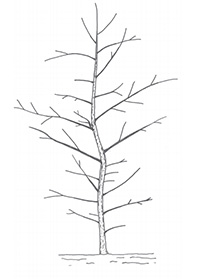
- Select the Lowest Permanent Branch
Selecting the lowest permanent branch does not mean lower branches should be removed. It might take several years to reach the lowest permanent branch because lower branches are kept to provide energy to support the proper trunk development. Each year lower branches are removed until the permanent branch is left at least seven feet above the ground. The lower branches should be cut off before they get two inches in diameter. In time, the first permanent branch provides clearance for mowing and other yard work. Over streets, the lowest branches should be at least 14 feet above the ground.
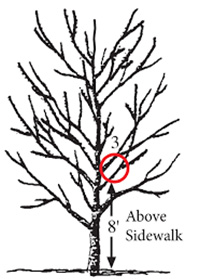
- Select Permanent Branches in Canopy
Above the lowest permanent branch, there is a mix of temporary and permanent branches. The permanent branches or scaffold branches are well-spaced with branches with wide branch angles. Each scaffold branch has developed collars and no bark. When selecting scaffold branches, the space between each branch should equal approximately 5% of the tree’s expected mature height. For example, a 20-foot sapling will have 1-foot minimum scaffold branch spacing. These branches have an even radial distribution around the main trunk. Remove all temporary branches growing between permanent branches before they grow to half the size of the trunk. Keep scaffold branches less than one-half the size of the trunk. Reduction cuts can slow their growth to avoid removal.
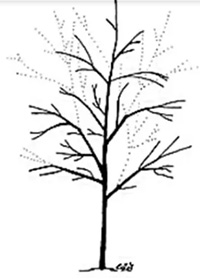
- Manage Branches with Bark Inclusions
Branches with inclusions should be shortened with reduction cuts or removed.
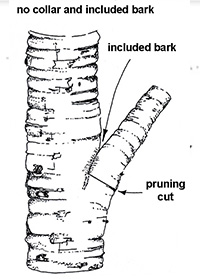
At year four, homeowners should hire a tree company to train the tree into the shape and structure desired. Ross Tree blogged about two young Elm saplings planted on South Elm Street in 2019. One tree died from a polar plunge in 2020. The other tree survived, about 20 feet tall, with a 4-inch trunk. It is a fast-growing tree in the need for structural pruning. The tree was pruned using the practices listed above this week Click here to go to the updated blog with pictures.
Ross Tree is an expert in young tree care. Call us at 303-871-9121 or fill out a requests service form to make an appointment.

